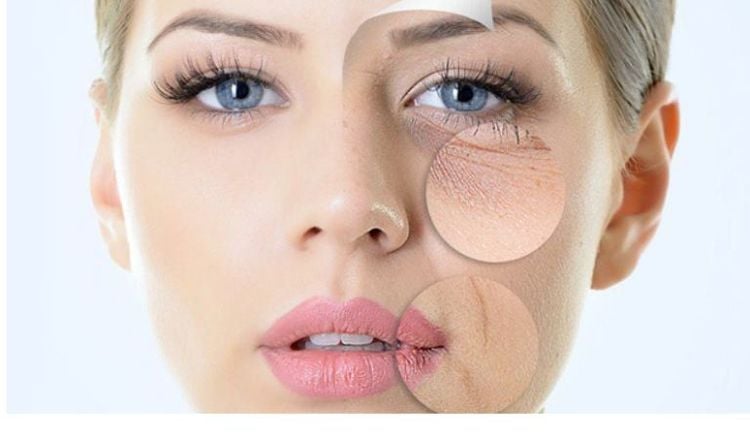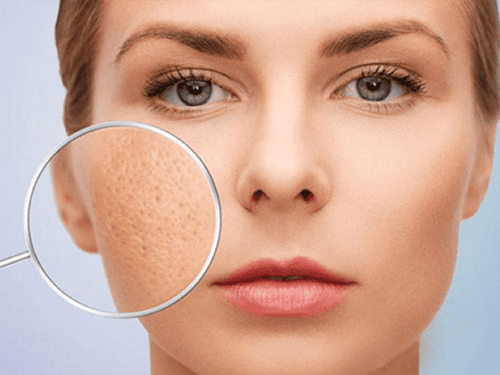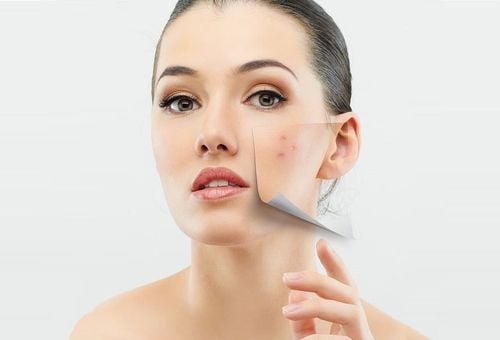This is an automatically translated article.
Skin is the largest organ on the body, made up of a number of different components, including water, proteins, lipids, minerals and chemicals. The layers of skin weigh on average about 2.7 kg. Skin care is very important for the purpose of protecting the skin from infections and disease-causing microorganisms. Throughout life, skin will be constantly changing, for better or worse. In fact, your skin regenerates itself every 27 days. Proper skin care is essential to maintaining the health and vitality of this fragile organ.
1. Structure of skin layers
There are specific medical terms for the different layers of skin, including:
The stratum corneum: The outer layer of dead skin The stratum corneum contains dead cells that used to exist in the epidermis. Using an exfoliator on your face and some other skin products removes or thins this layer.
Epidermis: Outer Skin The epidermis is the thinnest layer on the skin but is responsible for protecting you from the harsh environment. The epidermis has four layers of its own: the germ layer, the spiny layer, the seed layer, and the stratum corneum. The epidermis also contains different cell types: keratinocytes, melanocytes, and Langerhans cells. Keratin cells produce a protein called keratin, the main component of the epidermis. Melanin cells make your skin's pigment, called melanocytes. Langerhans cells prevent foreign substances from entering your skin.
Dermis: The middle layer of the skin This is the layer responsible for wrinkles. The dermis is a complex combination of blood vessels, hair follicles, and sebaceous (oil) glands. The dermis also contains collagen and elastin, two proteins essential for skin health because they provide support and elasticity. Fibroblasts are the cells that will also be found in this layer, as they synthesize collagen and elastin. This layer also contains nerves that sense pain, touch, and temperature.
Subcutaneous layer: The fatty layer of the skin Tissue loss in this layer is what causes your skin to sag as well as wrinkle. This layer contains sweat glands, fat, and loose connective tissue. The subcutaneous layer is responsible for maintaining the body's heat and protecting the important internal organs underneath.
Collagen and your skin Collagen is found in the dermis and is the most abundant protein in the skin, making up 75% of this organ. This is also the fountain of your youth. It is responsible for preventing wrinkles and fine lines. Over time, environmental factors and aging decrease your body's ability to produce collagen and can also break down existing collagen.
Skin and Elastin When you hear the word elastin, think elasticity. This protein is found along with collagen in the dermis, which is responsible for giving structure and support to your skin and organs. Like collagen, elastin is affected by time and external factors. Decreased levels of this protein cause your skin to wrinkle and sag.
Keratin and your skin Keratin is the most powerful protein in your skin. It also predominates in hair and nails. Keratin is what makes the skin firm.

Da là cơ quan lớn nhất trên cơ thể, được tạo thành từ một số thành phần khác nhau
2. How to keep the skin healthy?
The order of skin care steps to have a healthy skin is:
Thorough cleansing: You should do this twice a day. At night, remember to remove all makeup and properly clean your skin before going to bed; Use gentle soaps that are fragrance-free; Balanced nutrition; Moisturizing: This is recommended even for those with oily skin. There are many moisturizers on the market that are oil-free. Sunscreen: This is probably the most important thing you should do for your skin. Even in winter and cloudy days, you should apply sunscreen every day. Using sunscreen should also be done even if you are not outside much. A sunscreen that says “broad spectrum” (or protects against “UVA and UVB rays”) with an SPF of 30 or higher is essential. You should also limit your time in the sun, especially between 10 a.m. and 2 p.m., and wear protective clothing, such as long-sleeved shirts, pants, and hats. wide rim. Skin care should focus on all parts of the skin. Familiarize yourself with your skin, noting its own characteristics so that any changes are noticeable, such as moles or patches of color. They could be signs of skin cancer. Whenever you have questions or concerns, visit a dermatologist for proper examination and advice.
Please dial HOTLINE for more information or register for an appointment HERE. Download MyVinmec app to make appointments faster and to manage your bookings easily.
Reference source: webmd.com












